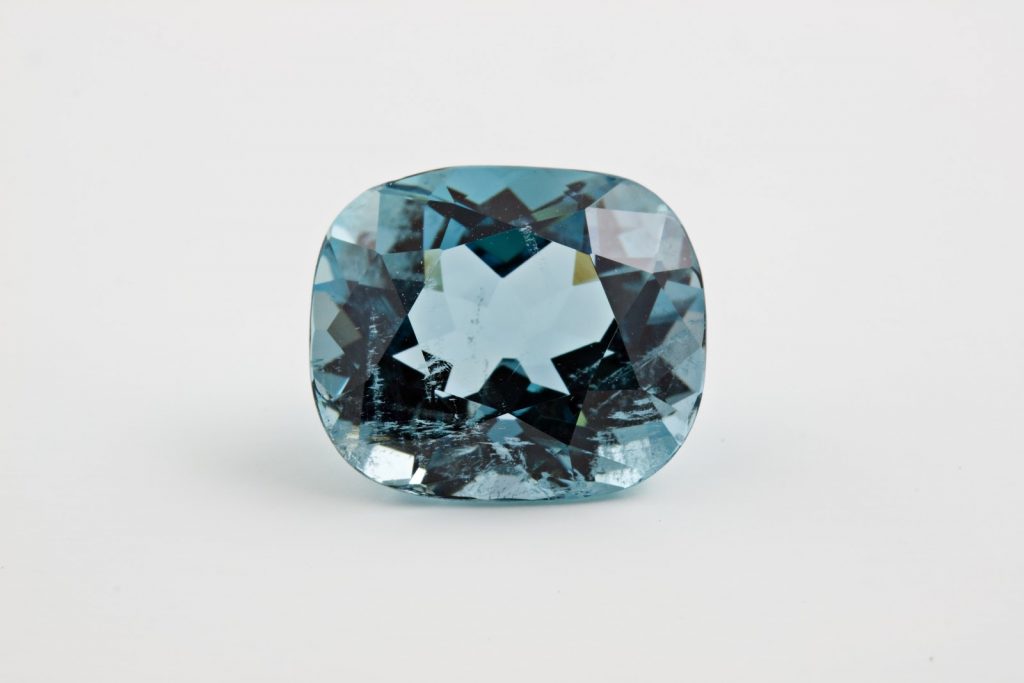Understanding the 4Cs of Emerald Quality
The 4Cs of color, clarity, cut and carat weight are used to grade diamonds are also used for colored gemstones as well. However, there are different standards for grading colored gems like emeralds.
Color

The first and foremost property emeralds are judged by is their color. A highly saturated emerald will outprice larger emeralds with less appealing color consistently, despite the rarity of larger gem sizes. Color is also not as complicated in emeralds as it is in other gems because emerald green is a very limited range from slightly yellowish green to bluish green. An ideal bluish green is typically the most desirable color, though everyone has their own preferences.
To show off the best imaginable color, the three values of hue, tone, and saturation must be ideal in the gem material. Imbalances in these values can make us perceive the color differently than what it is.
Hue is what we think of as color (green, yellow, orange) and can have modifying hues (yellowish green, bluish green, etc), tone refers to how light or dark a gem is, and saturation is the difference between grayish green and greenish gray. There is a lot to be said for the complexity of color.
Different Possible Hues of Emeralds
Bluish Green
Green
Yellowish Green
E1001
Emerald ID: E1001
Weight: 1.55 Carats
Origin: Zambia
E167
Emerald ID: E167
Weight: 1.01 Carats
Origin: Zambia
E1096
Emerald ID: E1096
Weight: 1.05 Carats
Origin: Zambia
Clarity
Emeralds are known for being included. They are a Type III gemstone, which means they almost always show inclusions. The scarce few emeralds that do not show any go for double to triple the price ones with similar color and weight do.
Type I gems are typically inclusion free, Type II gems usually show some inclusions, and Type III gems are expected to show inclusions.
Type I

Type II

Type III

Inclusions are also how emeralds are identified by gem labs and dealers. Their interiors often have distinct appearances from other gems, though observing these features may take practice.
Crystals, three phase inclusions, and needles (these have a wide range of appearances) are all frequently found in emeralds, as well as color-zoning, finger-prints, and many other features listed on our inclusions page. Emeralds have a lot of stuff in them, with the French referring to this as “Un petit jardin” or “A little garden” inside the emerald.



The types and arrangement of inclusions not only impacts appearance, but their durability too. Emeralds that are extremely included can also have problems with breaking while being set or cut. Credible emerald dealers will not stock emeralds that have durability issues like this.
Cut
The cut, or how the emerald is faceted, has a lot of complications. First, gem cutters often cut away 50%-70% of the original emerald in order to get the gem to show its best color and sparkle. Since these gems are priced by their weight in carats, the lapidary also wants to retain as much carat weight as possible for their bottom line. A symmetrical gem with high sparkle and low extinction, or black spots, visible is also desirable too. Shallow cuts are not ideal either, usually showing a huge window through the emerald.
However, most of the factors are usually in conflict with one another. Ideally cut emeralds usually lose more carat weight. The color can show better with a better cut, or losing too much carat weight may make the emerald too light. A lapidary also needs to keep emerald pleochroism in mind, since this means the emerald shows slightly different colors of green at different angles. They do not want to put opaque inclusions right where the buyer will be looking either.
Balancing all these factors is impossible to do with the vast majority of emeralds. All these factors are compromised in whatever way will bring the most value for the lapidary, which typically prioritizes color and weight.
Weight: 1.38 Carats
Origin: Zambia

There is also a variety of shapes and forms emeralds are cut as.
Carat Weight
In and of itself, carat weight is just the weight of the emerald. However, the implications of the weight are a little more complex since price increases exponentially with carat weight in emeralds.
While color, clarity, and cut are evaluations of quality, carat weight measures rarity and directly translates that into a price tag. The second part is that different carat weights command different magnitudes of prices. If color, clarity, and cut are all equal, then the pricing will show just how rare larger emerald sizes are. For example: if you have a 2.00 carat emerald and a 4.00 carat emerald, the 4.00 carat emerald will not be double the value of the 2.00 carat emerald. It will be something like four times the price assuming the quality is equal.
E1573 | play
Emerald ID: E1573
Weight: 2.01 Carats
Origin: Ethiopia
Price: $5,019.97
E1331 | play
Emerald ID: E1331
Weight: 4.03 Carats
Origin: Colombia
Price: $21,610.88
